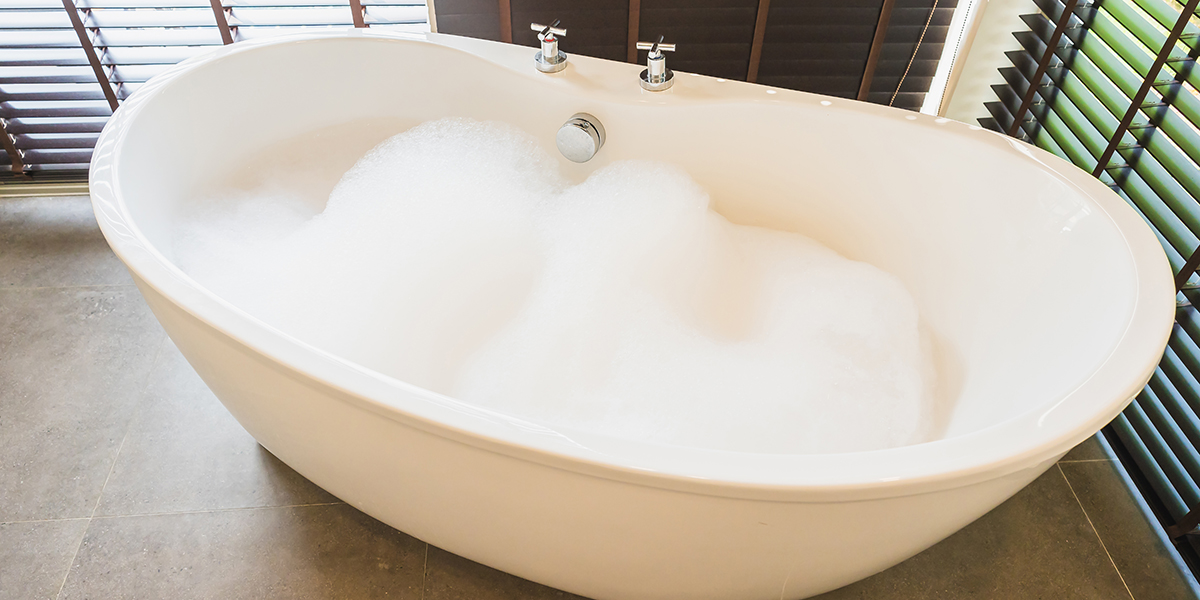They are making a few good observations on Why is Sewage Backing Up Into My Bathtub? as a whole in this great article underneath.

Sewer backup in the bath tub can be a stressful and unsanitary problem for any homeowner. Not only is it troublesome, but it also positions severe wellness risks and shows underlying problems with the plumbing system. Recognizing why sewage is turning up with the bath tub is essential for taking appropriate action to deal with the issue efficiently.
Introduction to the Problem
Typical Reasons for Sewer Back-up
Obstructions in the Drain Line
One of the most usual reasons for sewage backup is a clog in the sewage system line. This can happen because of the accumulation of particles, oil, or international things in the pipelines, stopping appropriate flow and causing sewer to support right into your tub.
Tree Root Breach
Tree origins seeking moisture and nutrients can penetrate sewer lines via little cracks or joints. In time, these roots can expand and broaden, causing substantial damage to the pipes and causing sewer backup problems.
Understanding the Trouble
When sewage draws back up into the bath tub, it's a clear indication of a trouble with the drainage system. The wastewater that must be moving far from your home is rather locating its back into your living space, which can result in considerable damages and health hazards.
Potential Causes
Several elements can contribute to sewage backup in the bathtub. From obstructions in the drain line to problems with the plumbing facilities, identifying the root cause is important for finding an option.
Aging Facilities
Older homes may have obsoleted plumbing systems that are much more vulnerable to rust, fractures, and degeneration. As pipelines age, they come to be extra vulnerable to leakages and obstructions, boosting the possibility of sewage backup incidents.
Heavy Rainfall or Flooding
Throughout durations of heavy rainfall or flooding, the drain system may end up being overloaded with excess water, causing backups and overflows. This can result in sewer backing up right into tubs and various other components inside the home.
Signs of Sewage Back-up
Foul Odors
Undesirable odors rising from drains pipes or fixtures, particularly in the bathroom, might indicate sewage back-up issues. These smells are typically solid and consistent, signifying a problem that needs prompt interest.
Slow Draining Fixtures
Bath tubs, sinks, and toilets that drain gradually or otherwise at all could be experiencing sewer backup. If multiple components are influenced at the same time, it's most likely that the concern stems from a common point, such as the primary sewer line.
Gurgling Noises
Unusual gurgling or gurgling sounds originating from drains pipes when water is running in other places in the house are indicative of air trapped in the plumbing system. This air accumulation can arise from sewer back-up and need to be explored without delay.
Wellness Dangers Connected With Sewage Backup
Contamination of Water Supply
Sewage backup can pollute the water in your home, posing a significant health risk to you and your household. Direct exposure to infected water can lead to gastrointestinal issues, skin infections, and other diseases.
Mold Growth
Moisture from sewer backup can produce ideal conditions for mold and mildew development in your home. Mold spores can intensify breathing problems and cause allergies in delicate people, making punctual cleaning necessary.
Spread of Illness
Sewage contains harmful microorganisms, viruses, and parasites that can cause a range of diseases, including hepatitis, cholera, and gastroenteritis. Entering into contact with sewer or contaminated surface areas places you in jeopardy of infection.
Tidying up After Sewage Backup
Disinfection Procedures
Thoroughly sanitize and sterilize influenced locations after sewer backup to get rid of hazardous bacteria and avoid mold and mildew growth. Use appropriate cleansing products and protective equipment to ensure risk-free and efficient cleanup.
Repair of Influenced Locations
Fix any damage to flooring, walls, or fixtures caused by sewage backup. Relying on the level of the damages, you might need to replace carpeting, drywall, or other materials to restore your home to its pre-loss problem.
Immediate Actions to Take
Switching Off Water Supply
In case of sewer backup, it's essential to shut off the water supply to stop additional contamination and damage. Situate the primary water shutoff valve in your home and closed it off until the problem can be settled.
Contacting a Professional Plumber
Dealing with sewage backup is not a do it yourself work. Get in touch with a qualified plumber with experience in handling sewage-related problems to examine the circumstance and execute required repair services or clean-ups.
Preventing Contact with Infected Water
Till the sewer back-up is fixed, stay clear of contact with polluted water to stop the spread of bacteria and pathogens. Use protective gear if you need to remain in the afflicted area and wash your hands completely afterward.
Preventive Measures
Regular Maintenance of Sewer Lines
Arrange routine evaluations and maintenance of your sewer lines to determine and attend to prospective concerns before they intensify right into major issues. This can consist of cleaning out debris, evaluating for tree root intrusion, and repairing any kind of broken pipelines.
Installing Backwater Shutoffs
Consider installing backwater valves in your plumbing system to stop sewage from receding into your home throughout periods of heavy rainfall or flooding. These valves instantly close when water starts backing up, securing your home from contamination.
Correct Disposal of Household Waste
Avoid purging anything besides toilet tissue and human waste down the commode to stop blockages and blockages in the drain line. Dispose of grease, oil, and other home chemicals appropriately to decrease the threat of plumbing troubles.
Why Is Water Backing Up in My Bathtub When I Flush My Toilet?
What to do about a sewer line clog
First, don’t bother with plunging. No amount of plunging will dislodge the clog in a sewer line. The clog is too far away. Plungers are for clogs in the toilet itself, not the sewer line. Plus, the most likely causes of a sewer clog are:
Tree roots Flushed toys or feminine products Grease buildup Those items don’t move easily. And in the case of tree roots, the roots need to be cut out of the pipe and the pipe will need to be repaired.
You’ll need a closet auger. A closet auger is a type of plumber’s snake with a protective cover to keep from scratching the delicate porcelain toilet. If the clog is further down, you may need to remove the toilet or use one of your cleanouts to get to the clog.
We also recommend doing a video inspection of the drain to ensure that the cause of the clog has been completely removed. Otherwise, you could have the same problem again in a few days or weeks.
https://mspplumbingheatingair.com/blog/why-is-water-backing-up-in-my-bathtub-when-i-flush-my-toilet

I discovered that article about Water Coming up Bathtub Drain while surfing around the web. Liked our piece of writing? Please quickly share it. Help other people find it. We truly appreciate reading our article about Why is Sewage Backing Up Into My Bathtub?.
Book With Us Today!